Focus on an Artist’s Book: La Cité des Animaux by Lynn Skordal
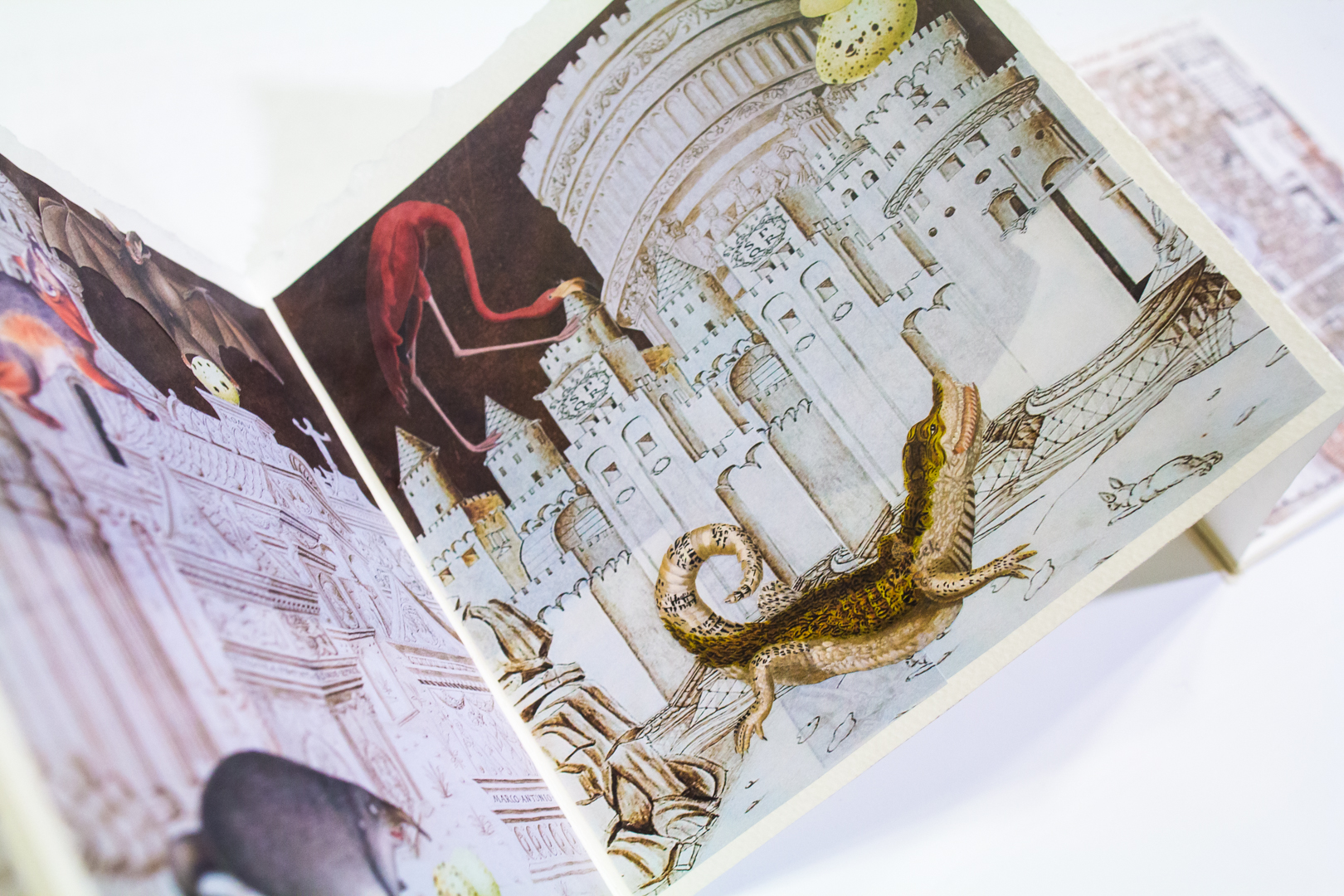
Real Places That Don’t Exist: La Cité des Animaux
In Andrew Wyeth: In Retrospect, we see how Wyeth masterfully conveys a sense of place, constructing a certain reality or vision of landscapes, domestic spaces, and people of rural Pennsylvania and the coastal villages of Maine. For the Dorothy Stimson Bullitt Library‘s current book installation, we examine an artist’s book that also conveys a sense of place, one that is carefully constructed yet imagined.
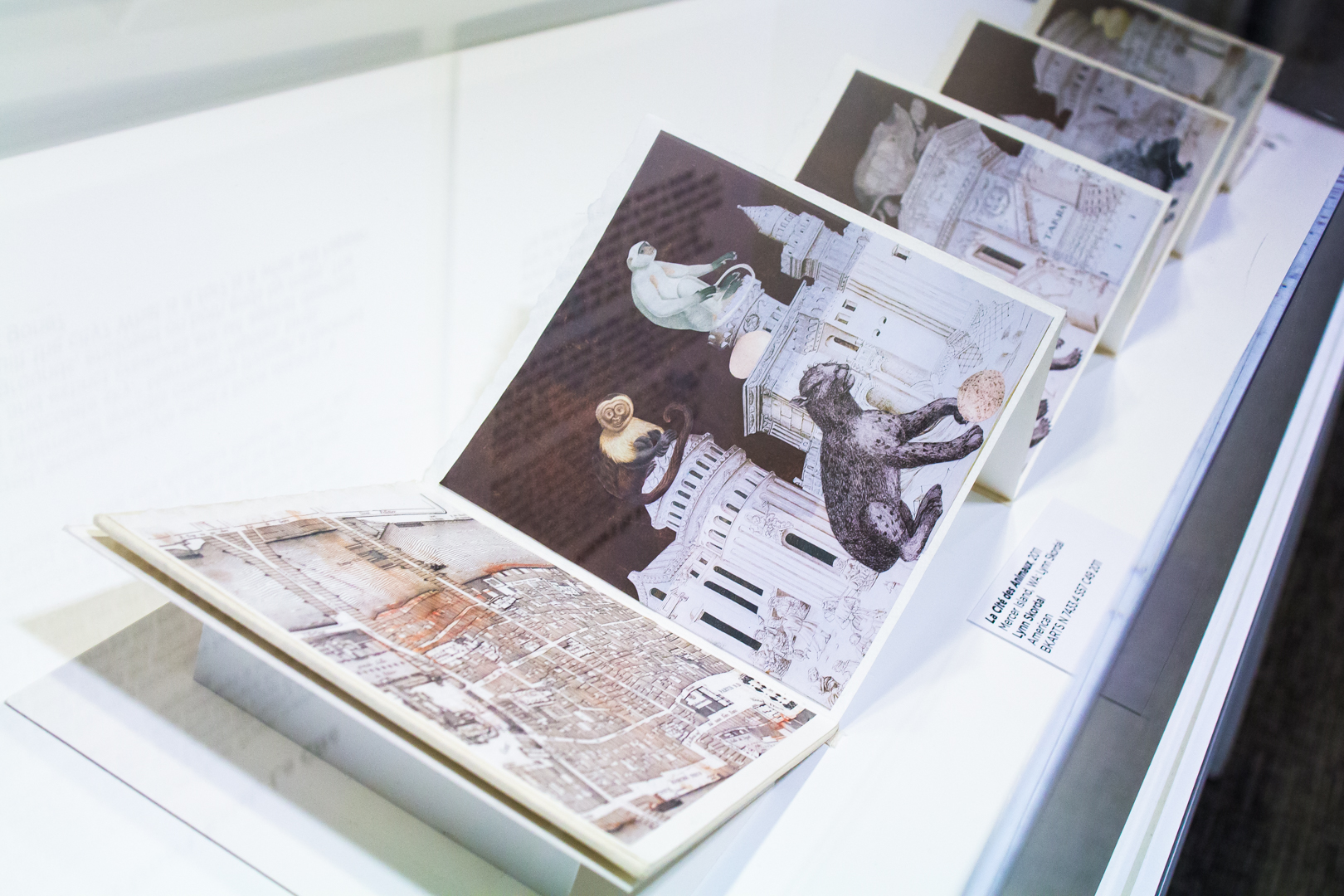
Washington artist Lynn Skordal considers herself a “paperworker.” After retiring from a career as an attorney nearly ten years ago, she returned to an early love—art. She now focuses on collage, artists’ books, and small works on paper that she creates from her collection of books rescued from local thrift stores, old magazines, used paper scraps picked up off the sidewalk, stamps and images torn from envelopes, cuttings from formidable reference works, and old engravings removed from disintegrating books. Her work has been described as “an exploration of real places that don’t exist.”1 One could certainly apply that idea to her thought-provoking artist’s book, La Cité des Animaux (Mercer Island, WA, 2011).
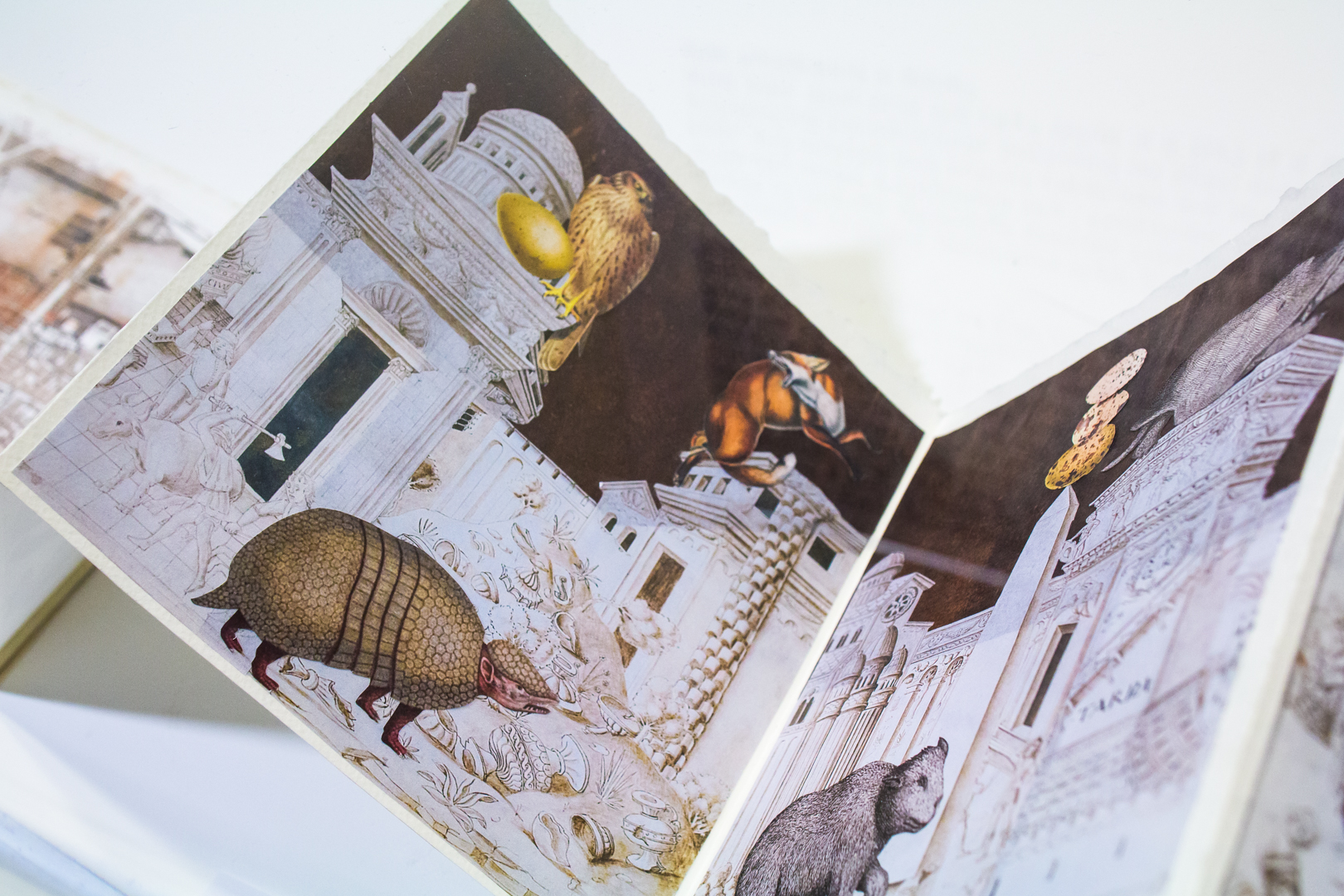
This unique, collaged, accordion-style artist’s book depicts “a parade of strange, whimsical animals creeping through a deserted white city under a chocolate sky.”2 Mammals, reptiles, birds, eggs, and stylized and extinct creatures are set against deserted architectural backgrounds, enclosed on both ends by maps. The artist asks, who built the city? What is it for? Is this what will happen after humankind is gone?3
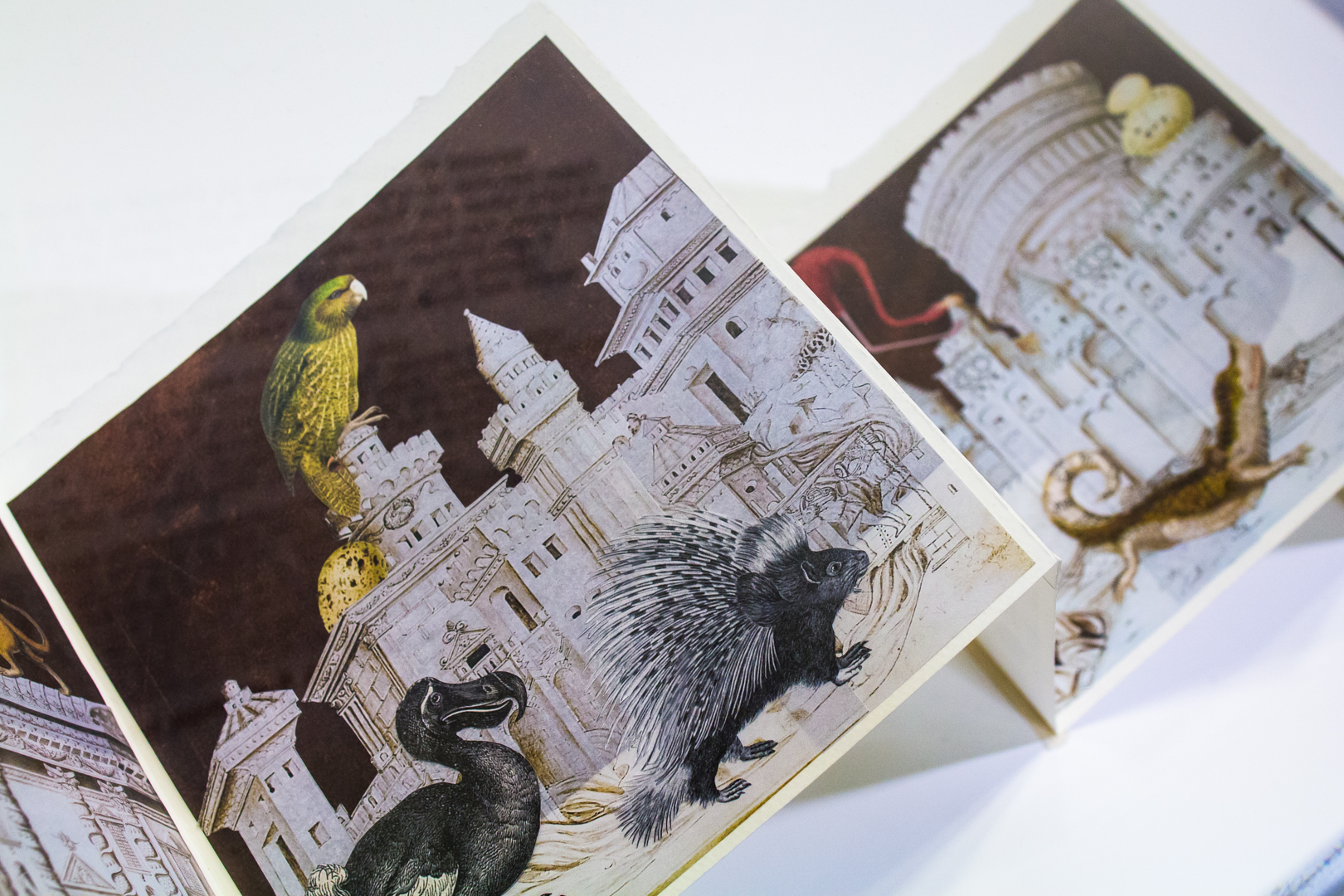
From Natural History to a New Reality
Skordal’s source material for La Cité des Animaux included several antique works. One was Locupletissimi rerum naturalium thesauri accurata descriptio et iconibus artificiosissimis expressio, per universam physices historiam (Accurate description of the very rich thesaurus of the principal and rarest natural objects . . . ). This elaborately engraved thesaurus of animal specimens was the creation of scientist and collector Albertus Seba (Dutch, 1665–1736). The initial volume of the work was published in 1734, with several volumes issued posthumously through 1765.
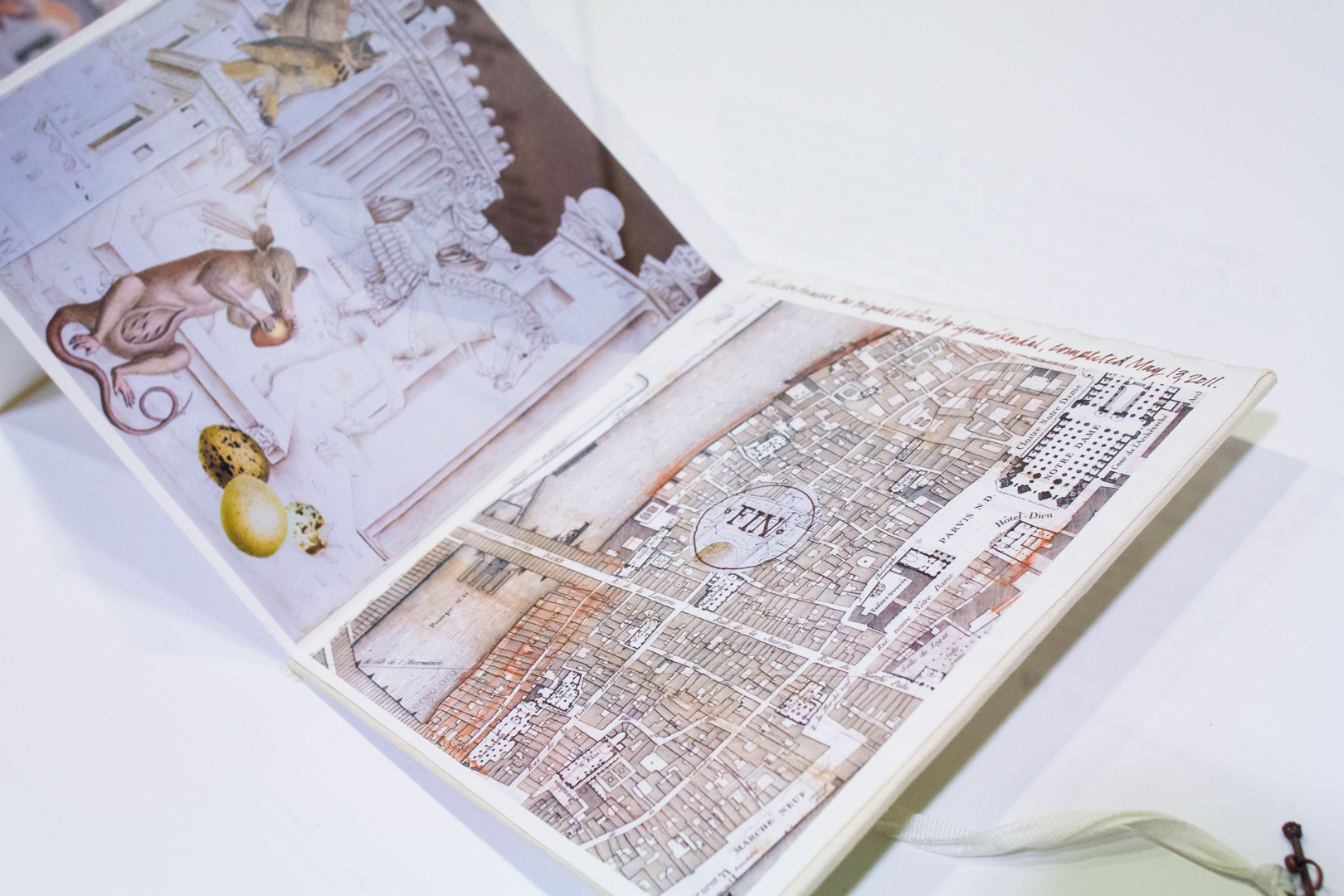
Seba’s work was derived from his own “cabinet of curiosities,” a notion Skordal seems to reclaim by pulling the animals from the format of the scientific natural history book and inserting them into a smaller, precious book form. Whereas Seba’s intent was to record and illustrate the natural world truthfully, Skordal uses Seba’s images to construct a new reality.
I was charmed by the idea of animals taking over spaces built by man, but with man long gone. That thought comforts and amuses me. [My work conveys] both a sense of place and a story. I like to create new little worlds where the usual rules may not apply, and where there is a little bit of magic or mystery at work–an alternate reality. The goal is always to startle, amuse, or provoke.4
To get a closer look at these works, or other works in our Book Arts Collection, make an appointment to visit the Bullitt Library. Appointments typically take place Monday–Friday, 10 am–4 pm.
– Traci Timmons, Librarian